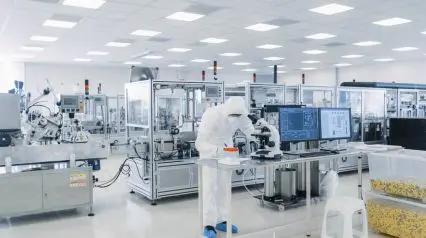What is a Permit to Work (PTW)?
Permits to work are special authorization documentation that ensures adequate risk has been accessed for the process and a level of control has been put in place to reduce the severity, likelihood, and potential of an incident occurring. These could be regulatory requirements, company policies, or general best practices, depending on the area of the world you operate in. These are part of a systematic approach to managing risk through authority and authorization.
A permit to work (PTW) system is a process to keep employees safe during hazardous and nonstandard operations. It involves assessing the risks, establishing a proper safety protocol based on the risks, and proper communication throughout the entire process. The PTW system is designed to mitigate environmental, health, sustainability, and safety risks in certain operations.
The permit-to-work system starts with identifying risks and hazardous areas and practices within the organization. It also includes identifying the work’s scope and the risks that come with it. These systems also involve appointing the people who are authorized to handle hazardous tasks and the people in charge of keeping the processes as safe as possible.
The permit-to-work system is part of the entire process. While it starts with risk and hazard identification, it also involves training employees, regular briefings, establishing protocols, and monitoring the PTW system to ensure that it’s doing its job of keeping the workers as safe as possible. Upon completion of work, the permit form needs to be handed back to the safety officer to sign off and retain a record of the form. This is often used as part of a control of work system.
Why is a PTW System Necessary?
When working in an industrial setting, there are risks that you can’t avoid. A PTW system is a necessary component of any business’ control of work system and is designed to handle and mitigate the risks that employees face on a daily basis. These risks can be sparks from welding practices, working in confined spaces, loose valve fittings, and more. In these settings, there is no way to eliminate these risks, but there are ways to control them and keep employees safe.
Some managers and organizations take these risks very seriously. Even if they may seem like tiny risks on the surface level, they can potentially become more major and put employees in dangerous situations.
Who Needs a Permit to Work?
The permit-to-work system can apply to many industries. However, they are most commonly used in industries that deal with hazardous processes, such as construction and manufacturing. These industries handle a bigger risk than other organizations as they put employees in situations where they can potentially get hurt.
This is why PTW systems involve a lot of documentation, assessment, training, and adjustments. The PTW system involves letting employees know when, how, and why the work needs to be done. This is a formal system designed to give employees clear tasks and ways to handle the tasks in the safest possible manner.
So, if an organization deals with certain risks and hazards in its operations, it will benefit greatly from a permit-to-work system. This is a key part of the organization’s work strategy control, hazard identification, and risk assessment.
Improve your GRC management
Simplify risk management and compliance with our centralized platform, designed to integrate and automate processes for optimal governance.
Explore nowTypes of Work Permits
In a permit-to-work system, employees are given permits to be able to accomplish specific tasks and authorization to conduct various processes. These are some of the most common work permits issued by organizations that implement a PTW system.

Hot Work
Hot work permits are used to authorize individuals to work with fire and anything that ignites a fire. Getting this work permit involves going through the proper training and briefing on safety practices. This is to ensure that all hot work in an organization is done safely, with employees knowledgeable on the proper protocols and best practices to follow.
Download a free hot work permit template to keep your workers safe from fire hazards.
Cold Work
This category of work permit is a blanket permit used for various processes that don’t involve fire or ignition systems. So, this is commonly used in chemical cleanups, working with the scaffolding, doing heavy lifting, and other similar tasks.
Get started with this free cold work permit template for your workplace.
Confined Space
Entering confined spaces such as tanks, vessels, and canals to conduct work can be very dangerous. That said, this is only used to authorize entry and investigation into the spaces. To actually conduct work in a confined space, additional permits are necessary.
Download this free template to ensure safety when working in confined spaces.
Electrical Work
Working with electrical components has an inherent risk that you cannot avoid. An electrical work permit is there to ensure that everyone working with electronics in an organization is doing so in a safe manner while alleviating and mitigating the major risks.
Working at Heights
Working at heights is common in the construction industry. Due to its nature, it’s considered one of the biggest causes of occupational injuries, accidents, and even fatalities globally. Ensuring there’s an available working at heights permit to work helps you, your workers, and contractors to consider and document any hazards related to their work. Ultimately, doing this aims to reduce the possibility of accidents happening and improve worker health and safety.
Lock Out Tag Out (LOTO)
Serving as a key element of an organization’s overall LOTO program, a lockout tagout permit to work helps ensure equipment inspections, maintenance, and operations are conducted and accomplished safely. Since these activities can be complex, risky, and dangerous, having a PTW system in place is crucial in minimizing worker injuries caused by accidental operations of equipment and other assets.
How to Get a Permit to Work
Getting a permit to work involves the following steps:
- Employees go through the appropriate training and education to ensure that they understand the risks associated with their jobs and know the measures in place to mitigate the risks.
- Before getting a work permit for tasks, employees need to show that they are capable of handling them safely and effectively.
- The manager also needs to determine if the work is absolutely necessary because if it isn’t, then it’s best to avoid the risk altogether.
This is why permit-to-work systems require good documentation and reporting systems. That way, the safety team can stay on top of all the work and check if everyone is working according to company safety standards and practices.
Create your own Permit to Work checklist
Build from scratch or choose from our collection of free, ready-to-download, and customizable templates.
Browse Permit to Work checklists
What Challenges Do Organizations Face When Implementing a PTW System?
There’s a high potential for a PTW system to be completely a back office activity for the sake of convenience. And while it may be convenient, it’s important to ensure that the people on top of the PTW system are employees who actually do these jobs and understand all the risks associated with them.
Additionally, it’s vital for the team to strike the right balance between safety and efficiency. Some redundant safety practices may end up affecting the organization’s efficiency and performance. It’s also crucial that safety practices don’t harm the company’s efficiency and productivity, as that will defeat the purpose of having a PTW system in the first place.
On top of that, implementing a PTW system is hard on its own. With these systems, it’s important for all employees to understand how the system works, why it’s important, and how to follow it. That way, the organization knows that there are no unnecessary risks in any process, and if there are risks, proper controls are in place to mitigate these risks.
FAQs about Permit to Work
PTW stands for Permit to Work. It is a formal authorization issued in workplaces for activities with higher safety risks. It helps ensure that projects and specific tasks are done according to the established procedures and standards—enhancing safety and mitigating risks.
Work permits under a PTW system may be denied if:
- employees don’t have adequate training for the practice;
- the task isn’t necessary; or
- the risk is too severe for the employee.
A proper PTW system should have the right criteria to explain when tasks are necessary and what measures the employee has to take to ensure their safety.
Employees can get their work permits for certain activities from the appropriate office within the organization. PTW is an internal system, so authorization for certain tasks will usually come from within the company.
Work permits are necessary for hazardous tasks in the workplace to ensure that the employees have the proper training and know how to handle the task. That way, when they perform the task, they do so safely and eliminate the critical risks. You also need it as part of a control of work system.
Yes, permits to work usually come from within the organization. That’s why it’s important to do a proper risk assessment, so that all the risks with certain processes are properly identified, and the right controls are in place to improve worker safety. It is typically issued by a manager, supervisor, safety officer, or someone competent in the field or industry. Ideally, the issuer should not be a part of the team performing the task to avoid bias and eliminate the possibility of inaccurate audits.
There’s no specific or uniform timeframe when it comes to the duration and validity of a Permit to Work. This is heavily dependent on the needs of the project and is usually decided by the authorized personnel involved in the completion of the task.



